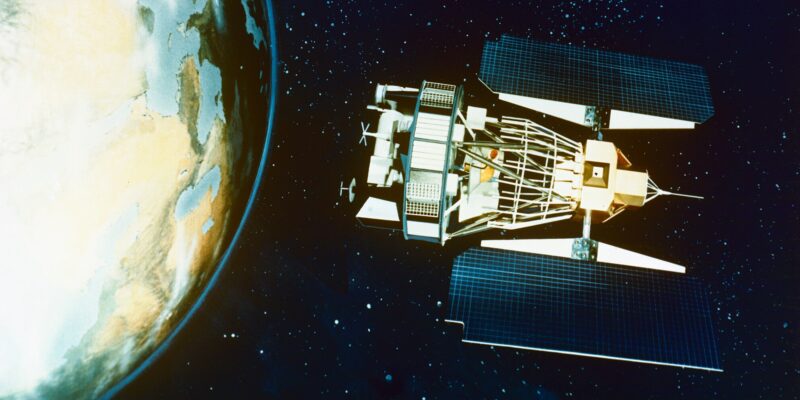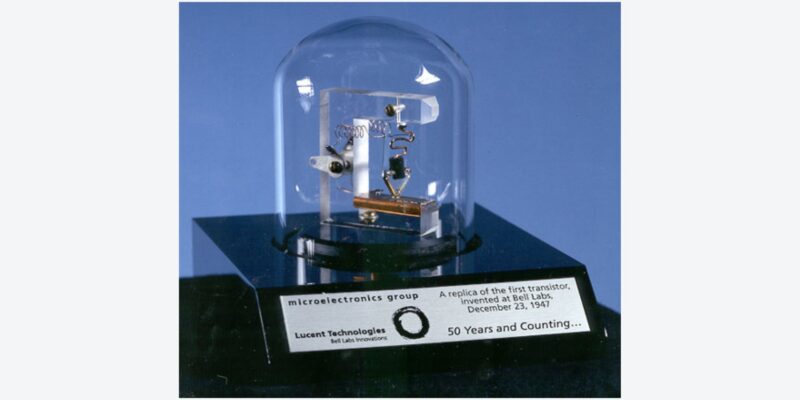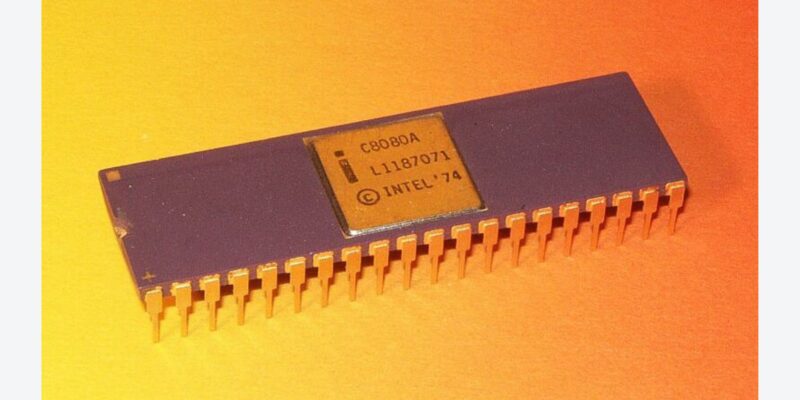We explore the Third Industrial Revolution, and describe its characteristics. In addition, we discuss the innovations of this period and their impact.

What was the Third Industrial Revolution?
The Third Industrial Revolution refers to a series of technological innovations that impacted production and distribution methods in industrialized countries, and which in turn brought about profound changes in the world economy during the 1970s and 1980s.
These innovations led to a marked increase in productivity, centering on four branches of scientific development: information technology, biotechnology, telecommunications, and energy engineering. The countries that led this process were the United States, Japan, Germany, and the United Kingdom.
With the Third Industrial Revolution, the organization of production changed. Multinational companies merged administration, production and marketing tasks, and large corporations were established. Technological development enabled increased levels in productivity based on process automation and the introduction of information technology into business structures.
These transformations affected the relationship between the organization of capital and labor and, as a result, the link between the economy and the state. During the 1970s, a number of countries gradually began to replace the political model of the welfare state with the liberal state.
Some experts believe that the changes known as the Third Industrial Revolution laid the foundations for a new type of society worldwide, known as the "information and knowledge society".
- See also: Second Industrial Revolution
Characteristics of the Third Industrial Revolution
The main characteristics of the Third Industrial Revolution include:
- The introduction of information technology as the main means of information processing in industries and businesses.
- Increased productivity as a result of the integration of information technology with telecommunications in production processes.
- The emergence of multinational corporations that concentrated tasks connected with management, production, and trade across the various economic sectors.
- Technological development in four major branches of science: information technology, biotechnology, telecommunications, and energy engineering.
- The use of new materials for industrial production and the search for new energy sources to replace oil and generate electricity.
- The geographical redistribution of industrial and agricultural production as a result of improved communications and transportation.
- The consolidation of the consumer society and the emergence of the information society.
Innovations of the Third Industrial Revolution

The main sciences that characterized the Third Industrial Revolution were information technology, telecommunications, biotechnology, and energy engineering.
Information technology
Information technology is the science that studies the techniques for processing, storing, and managing information. Since the 1960s, computer science has been concerned with the automation of these processes through the use of computers and electronic devices.
During the 1970s, inventions in the field led to major advances in computing development: the chip (specific-purpose integrated circuit) and the microprocessor (multipurpose integrated circuit). The following decade saw the large-scale integration of these advances into the different productive sectors.
As a result, the use of computers, which were increasingly smaller in size, became widespread in various sectors, including automobile, aviation, household appliances, and other consumer goods industries.
The demand for computer products soared in just a few years. The first microprocessors were invented in 1970, and by 1975 there were 750,000 microprocessors in industry and production. By 1985, there were about eighty million computers of different sizes, and by 1990 the number had reached one billion devices with microprocessors.
Telecommunications
Telecommunication is the transmission and reception of signals, which are processes that make long-distance communication possible. During the 1970s, two areas of telecommunications experienced major breakthroughs: satellite transmissions and telematics (data transmission over telephone lines).
The number of satellites for communication increased during this period, enabling communication to reach any point in the world. Telematics, in turn, incorporated the advances in computing by integrating telephones, computers and televisions.
The revolution in communications facilitated the rapid interconnection between strategic markets as well as the consolidation of remote financial speculation. Instant access to information on the evolution of stock markets changed business times, leading to stronger interference of corporations in the international arena.
Biotechnology
Biotechnology refers to a set of techniques involving the manipulation of living things with the purpose of modifying plant or animal products. Most biotechnology products are created in a laboratory and are synthetic.
This enabled the invention of new products that would otherwise not exist naturally. Among the advances in biotechnology during this period were cloning (reproduction of a new organism identical to the original), gene splicing (manipulation of species change), and unicellular tissue propagation (genetic improvement of species).
Biotechnology was applied particularly in the food and pharmaceutical industries. In the food industry, the production of genetically modified seeds and the genetic alteration of animal species to increase productivity were implemented. As a result, a large number of food products reduced their dependence on soils and natural production cycles.
In the health industry, hundreds of new products were created for medical purposes, such as insulin, anticoagulants, cytokines and lymphokines (immunological substances), and endorphins and enkephalins (narcotics).
Bioengineering has also led to the creation of new artificial materials that replace natural elements, such as optical fiber, silicon silicates, and new metal alloys (zirconium, beryllium, and niobium).
Energy engineering
Since the rise in the price of oil in the 1970s, engineering has been concerned with finding alternative energy sources for industrial production. Coal and nuclear power began to be used for electricity generation. However, the use of these energies had negative effects including pollution and radiation.
Energy engineering seeks to find new sources of renewable and sustainable energy, while developing technology to reduce energy needs.
The main sources of renewable energy that are used for electricity generation are:
- Solar energy through the use of solar panels
- Wind energy through the use of windmills
- Biomass energy from organic waste
- Geothermal energy through temperature conduction and convection systems
Major technologies of the Third Industrial Revolution

The transformations of the Third Industrial Revolution were made possible thanks to some of the following inventions:
- Semiconductor. This material can work both as an energy conductor or as an insulator. The most common semiconductor material is silicon, used to make electronic components (LEDs, microprocessors, and transistors).
- Transistor. It is a semiconductor electronic device that allows the transfer of information in response to a signal. Transistors are used in nearly all electronic devices, such as radios, televisions, and cell phones.
- Silicon chip. It is a semiconductor integrated circuit made up of a number of transistors and other components. Silicon chips are used in smartphones, automobiles, and other electronic systems.
- Artificial satellite. It is a machine placed in orbit around the Earth that allows the reception and transmission of signals to and from any point on the planet. Types of satellites include communications satellites (which receive and broadcast radio and television signals), Earth observation satellites (which collect information for scientific, civil and military purposes), and meteorological satellites (which monitor Earth's climate).
- Optical fiber. This material allows the conduction of photoelectric pulses, and is used for transferring data at high speeds and over long distances. Among its current uses are submarine or long-distance wiring, communication systems, and light fixtures.
Effects of the Third Industrial Revolution

The effects caused by the Third Industrial Revolution impacted the lifestyles of societies in industrialized countries. Advances in information technology, biotechnology, telecommunications, and energy engineering influenced the political, economic, and social spheres:
Organization of work
Advances in information technology had a great impact on the organization of work. The use of computers replaced tasks associated with the systematization and management of information. This affected employment in offices and state bureaucracy enormously, as it led to job displacement.
The development of telecommunications, in turn, allowed companies to become multinational. In addition, new specialized job categories emerged related to business management.
International redistribution of production
Advances in biotechnology in the food industry transformed the structure of agriculture in various countries. The development of biotechnology programs involved high costs, which favored large companies over small producers of primary goods for food production.
During the 1980s, US multinational companies managed to control 96% of the patents for biotechnology-related inventions. Moreover, these same companies controlled a large percentage of the global trade of food and agro-industrial products.
Thus, the Third Industrial Revolution caused a shift in agricultural regionalization on a global scale: industrialized countries no longer depended on the agricultural production of tropical countries for food production. Therefore, the main victims of this transformation were small agricultural producers in Latin America, Africa, and Asia.
Globalization
Scientific advances applied to transportation, communications, and industry led to the integration of the economy at the global level. This process is also known as globalization.
Innovations in transportation and communication systems made it possible for multinational companies to set up factories in countries with cheap labor (that is, where workers’ rights are not guaranteed). In this way, a large number of companies reduced production costs while increasing profits.
Likewise, these advances facilitated the expansion of trade. With the globalization of markets and the transnationalization of mass media, certain goods and cultural consumption habits were standardized.
Background of the Third Industrial Revolution
The concept of the Third Industrial Revolution corresponds to a periodization that identifies various historical processes that revolutionized production, and which resulted in major changes in the political, economic, and social organization worldwide.
First Industrial Revolution (1760-1840)
- It was characterized by the emergence of factories in cities, the invention of the steam engine for the mechanization of manufacturing, and the use of coal as energy source.
- These changes made large-scale production possible, leading to the growth of the textile, metallurgical, and food industries.
- Transformations began in England and gradually spread to the United States and different countries in Europe.
- Its far-reaching effects were social (emergence of the working class and the bourgeoisie), economic (rise and spread of capitalism), and political (crisis of the Ancien Régime and the spread of liberalism).
Second Industrial Revolution (1870-1914)
- It was characterized by a greater specialization of labor in factories. In addition, the assembly line (the rational division of labor into consecutive steps carried out by different workers) made mass production possible.
- Steel production became key for the development of other industries. In addition, new sources of energy were used, such as oil and electricity.
- The most important inventions of this period were the automobile and the airplane (with internal combustion engines), the electric tramway, and telecommunications (telephone, radio, phonograph, and cinematograph).
- Industrialization spread across Europe, the United States, and Japan. Germany was the country to experience the greatest industrial growth during this period.
Fourth Industrial Revolution
The Fourth Industrial Revolution refers to a series of technological changes that have affected the world economy since the early 21st century. The concept is not universally accepted within the scientific community, with many experts arguing that these forms of production are linked to the Third Industrial Revolution and do not in themselves constitute a paradigm shift in the global economy.
The Fourth Industrial Revolution is characterized by the integration of different areas of scientific knowledge (physical, digital, and biological). The main fields of technological innovation include robotics, nanotechnology, artificial intelligence, and programming. Furthermore, the widespread use of the internet has led to the interconnection of devices, systems, and services.
Advocates of the Fourth Industrial Revolution highlight the introduction of new production systems, the integration of supply chains with manufacturing systems through electronics, as well as software development and communication platforms.
Explore next:
References
- Cantor, R. V. (1994). La tercera revolución industrial. Universitas Humanística (39).
- Cuello C., F. A. (1987). La información, los servicios y el «complejo electrónico»: una visión panorámica de la tercera revolución industrial. Investigación y Ciencia, año 2, núm. 5 (mayo-agosto 1987), pp. 161-170.
- González Hernández, I. J., Armas Alvarez, B., Coronel Lazcano, M. (y otros). (2021). El desarrollo tecnológico en las revoluciones industriales. Ingenio Y Conciencia Boletín Científico De La Escuela Superior Ciudad Sahagún, 8(16), 41-52.
- I Sellens, J. T. (2002). De la Nueva economía a la economía del conocimiento: hacia la tercera revolución industrial. Revista de economía mundial, 7.
- Peemans, J. P. (1992). Revoluciones industriales, modernización y desarrollo. Historia crítica, (6), 15-33.
- Roel, V. (1998). La tercera revolución industrial y la era del conocimiento. Lima, Universidad Editorial Mayor de San Marcos, Fondo Editorial.
Was this information useful to you?
Yes NoThank you for visiting us :)